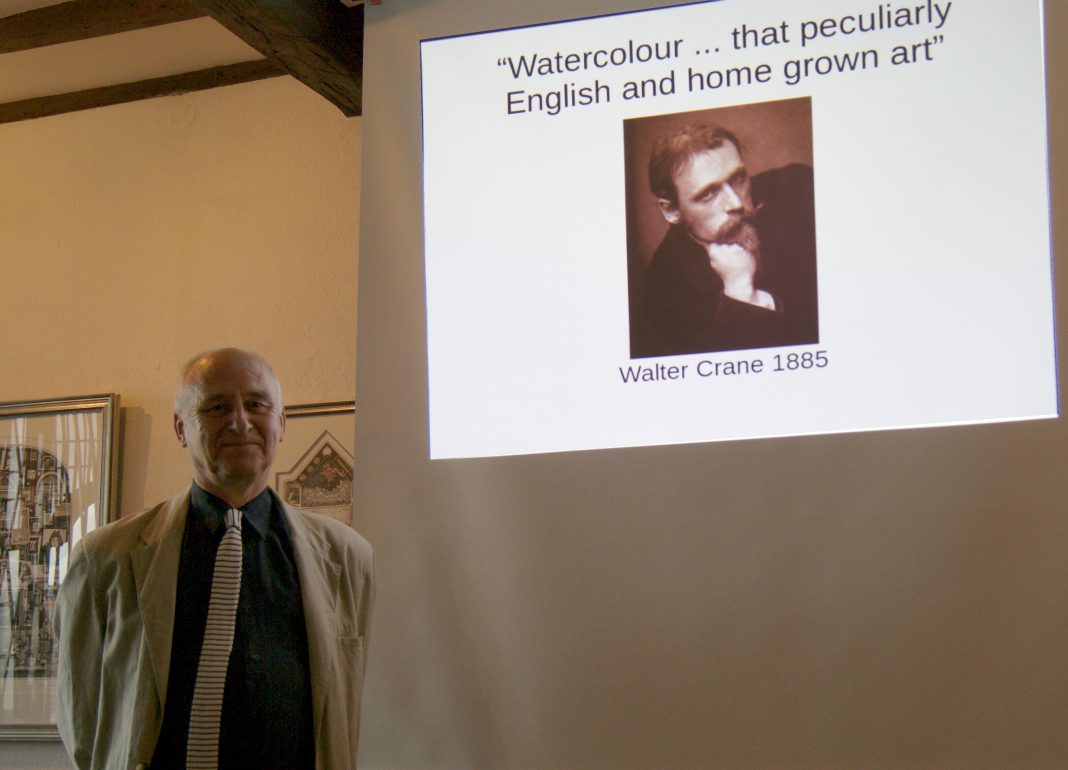Watercolour painting as a subject is enormous, so who better to talk about it than the President of the Royal Institute of Painters in Water Colours (RI) and in his first year in the role, local artist Andy Wood PRI, RBA, spoke to the Friends of Rye Art Gallery.
In 1855 at the Exposition Universelle in Paris one French critic wrote “watercolour is for the English, a national art”, but it turns out that watercolour was not always the preserve of the English. From primitive cave paintings, paintings on papyrus, to Turner and beyond into the world of abstract art, Wood gave a fascinating talk on this complex topic.
As for Wood’s approach to watercolour, that’s simple, the artist’s role is to look and communicate what he sees. “There are things that may not be so obviously attractive but, that are just as beautiful and just as wonderful when you consider them, and they’re the things I’m interested in painting,” he says. “For me, it’s about peaceful, contemplative scenes.”
Wood studied painting at Croydon and Newport Colleges of Art, gaining a degree in Fine Art (Painting) and Film in 1970. Having left art school he had many different jobs before becoming a full time artist. In 1996 he was living in Dorset and opened the Andy Wood Gallery in Lyme Regis which showed his paintings and prints as well as the work of other artists and friends. He moved to Rye in 2002. As the President of the RI and a member of the Royal Society of British Artists he regularly exhibits in their annual shows and elsewhere in both the UK and abroad.
The next event for Friends of Rye Art Gallery is on July 15. A visit to the Pallant House Gallery in Chichester has been arranged, to visit their latest exhibition, Sickert’s Dieppe. The visit will start with an introductory talk. Non members are welcome, for details contact Paddy Harvey on 01797 229622 or email: gillmaycot_rye@yahoo.co.uk.
Photo : Paddy Harvey (Chairman of the Friends of Rye Art Gallery)



